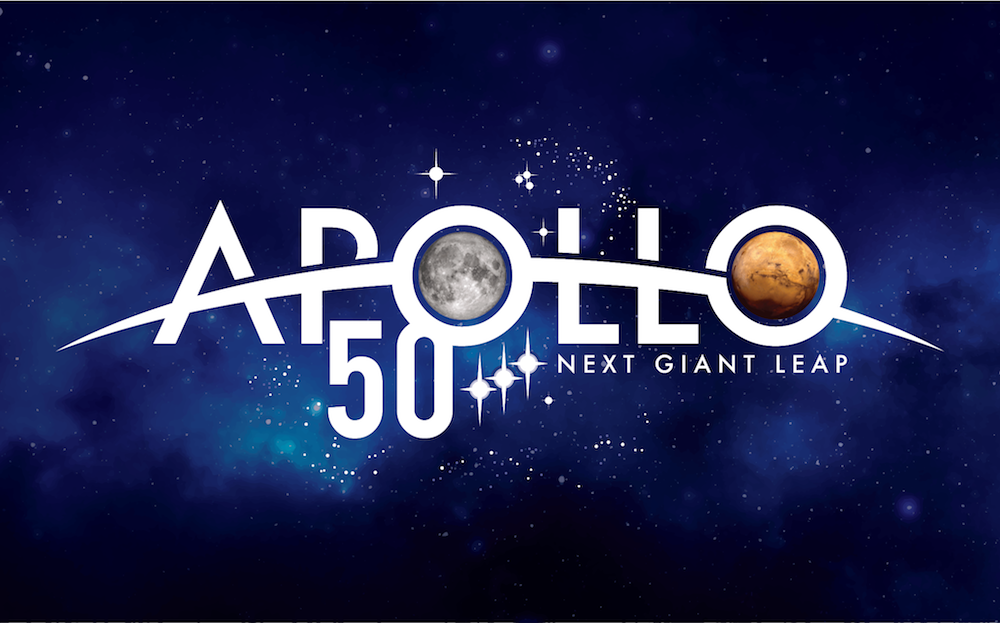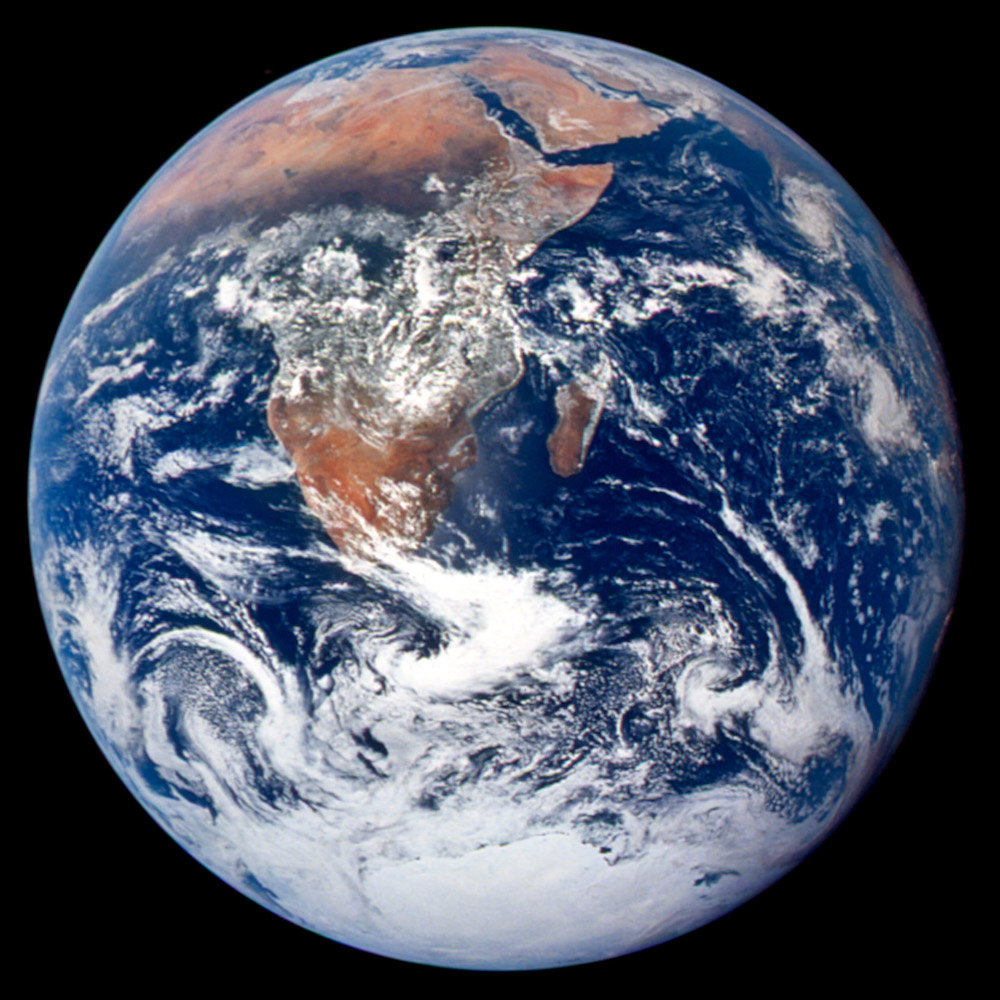MAN ON THE MOON, HALF A CENTURY LATER
On July 20th, 1969, at 21:56:15 EST, a human footprint is
left for the first time on the surface of another world:
the Sea of Tranquility on the Moon. This is perhaps the
greatest achievement in the history of man. It was indeed
"a small step for a man, a giant leap for mankind", as
Apollo 11 mission's commander Neil Armstrong pointed out
while first steping on that alien world. This was the
culmination of a tremendous effort by thousands of men and
women since president J. F. Kennedy challenged his people
"to land a man on the moon before the dacade is out" in a
speach to U.S. Congress, on May 25th, 1961. Three prior
missions, between 1968 and 1969, tested the hardware
needed to fly to and stay on the moon, and two of them
(Apollo 8 and Apollo 10) proved that it was indeed
possible to do such a round trip and bring home the
astronauts alive. Learning all the technical knowledge
required -long-duration flight, rendez-vous and docking,
extra-vehicular (EVA) activity- was the result of the
successful Program Gemini, with 10 manned flights carried
out between 1964 and 1966. After Apollo 11, 5 more
missions performed successful landings bringing to a total
of 12 the number of astronauts who walked on the Moon
between 1969 and 1972. Only one mission, Apollo 13, had to
abort its flight on the way to the Moon due to a major
malfunction that threatened the life of the crew. About
three days after the accident, the Apollo 13 astronautas
were recovered back safely in the Pacific Ocean. Apollo 17
was the last mission that brought people to the lunar
surface. Due to lack of political interest, project Apollo
was cancelled, and since December 1972 no human has ever
set foot again upon the Moon. Thus, 50 years later, Apollo
remains the "most hazardous and dangerous and greatest
adventure on which man has ever embarked", as once Kennedy
said.
The legacy of puting a man on the Moon has had a remarkable impact
in our society. Today, any mass-scale development of a
technological product, for example, that goes on the market relies
on manufacturing schemes based on the engineering standard of
testing the product many times before releasing it to the
public. That standar procedure of testing in the production line
was invented for Apollo. The requirement of bringing astronauts
alive back to Earth meant that every part of the whole Apollo
hardware -rocket, spacecraft, space suit, etc.- had to be tested,
thoroughly, to ensure its correct functioning with an almost zero
probability of failure. Nevertheless, it is perhaps the most
significant result of Project Apollo the fact that, for the first
time, human eyes could contemplate in its entirety and full beauty
our planetary home, the Earth. A magnificent and at the same time
very fragile orb suspended in the blackness of space, giving to it
the only appreciable color. It was surprising, even for the
astronauts, going to explore the Moon, but ending up discovering
the Earth. Much technological development was produced for Apollo
in the 1960s, but this may have happened eventually anyways. In
this respect, what Apollo did was to speed up tremendously the
development of the technology that nowadays is found in every home
and almost in every pocket, such as cell phones, digital cameras,
TV sets or personal computers.
The Moon is there, waiting for us to come back. Perhaps to
establish a permanent base to develope the first human
colony outside our planet, or to set an outpost that
enables exploration voyages to other planets in the Solar
System. In the mean time, the interest to go back to the
Moon -at the level of Apollo- needs to be renewed, while
the next "giant leap for mankind" has been
identified: a manned mission to the planet Mars. New
technology in propulsion, rocket system, spacecraft and
astronaut suit, to name a few, is being developed for that
challenging endeavour. New groups of astronauts are being
prepared for that. But all that is based on and profoundly
inspired by Apollo, the space program that half a century
ago put human beings on the Moon.
— July 2018. (Last revised: February 2019.)

The following is a collection of selected information on NASA's Project Apollo:

 EVA on the Sea of Tranquility. Astronaut Neil Armstrong
(CDR) photographs astronaut Edwin "Buzz" Aldrin (LMP)
deploying the PSEP (AS11-40-5947). The lunar module Eagle is seen in the
background. This is the first mission that brought humans
to the surface of the Moon. Credit: N. Armstrong
(Apollo 11)/NASA.
EVA on the Sea of Tranquility. Astronaut Neil Armstrong
(CDR) photographs astronaut Edwin "Buzz" Aldrin (LMP)
deploying the PSEP (AS11-40-5947). The lunar module Eagle is seen in the
background. This is the first mission that brought humans
to the surface of the Moon. Credit: N. Armstrong
(Apollo 11)/NASA.
Final remark: If you do not believe any of the above, watch this!
(it's brilliant!):
"Writer/director S. G. Collins of Postwar Media debunks every theory
that the Apollo Moon landings could have been faked in a
studio. The filmmaker takes a look at the video technology of the
late 1960's, showing alleged fraud was simply not
possible".
Credit: VideoFromSpace (2013).





